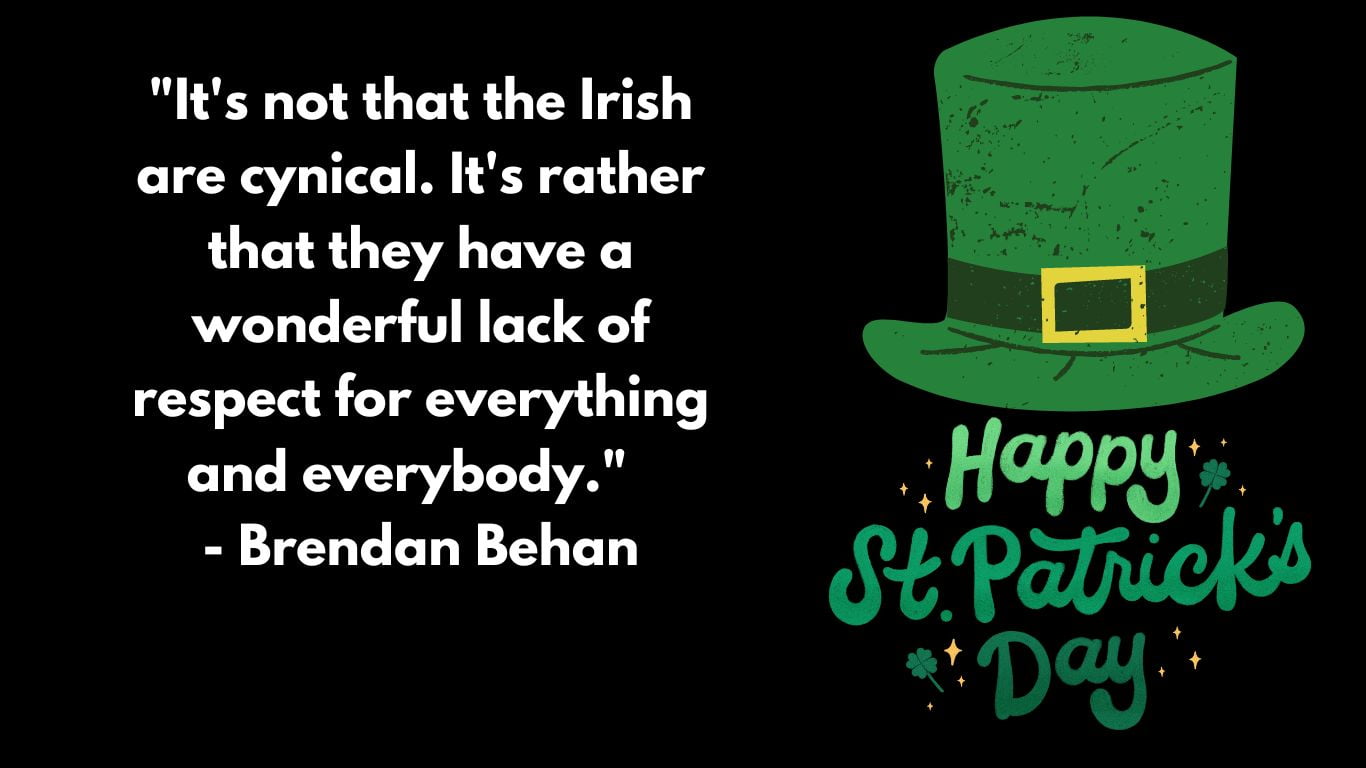St. Patrick’s Day is a cultural and religious holiday celebrated annually on March 17th. It is named after Saint Patrick, the patron saint of Ireland, who is credited with bringing Christianity to Ireland in the 5th century.
St. Patrick’s Day is celebrated in many parts of the world, but is especially popular in Ireland and among Irish communities around the globe. The day is marked with parades, parties, and the wearing of green, which is associated with Ireland and with St. Patrick’s Day specifically.
Many people also celebrate St. Patrick’s Day by drinking green beer or other Irish-themed beverages, and by enjoying traditional Irish foods like corned beef and cabbage. The day is also often associated with symbols of Ireland, such as the shamrock, the harp, and the Claddagh ring.
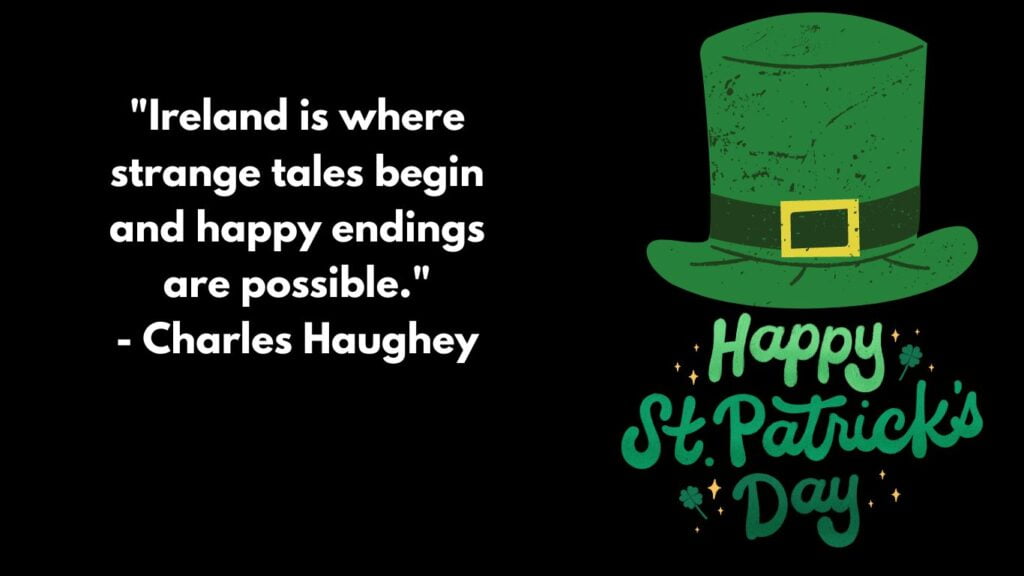
St. Patrick’s Day is a time to celebrate Irish culture and heritage, and to honor the contributions of Saint Patrick to the history of Ireland.
The color green is strongly associated with St. Patrick’s Day, as it is the color of Ireland’s flag and also represents the lush green landscape of the country. People often wear green clothing, accessories, and even face paint to show their Irish pride.
In addition to parades and festivals, many cities hold other special events to celebrate St. Patrick’s Day. For example, the Chicago River is dyed green each year, and New York City holds a large parade that dates back to 1762.
St. Patrick’s Day is a popular day for people to enjoy traditional Irish food and drinks. Corned beef and cabbage is a classic dish, along with Irish soda bread, shepherd’s pie, and bangers and mash. Popular drinks include Guinness and Irish whiskey.
In Ireland, St. Patrick’s Day is a public holiday, and many businesses close for the day. However, it is not typically as wild of a celebration as it is in other parts of the world. Instead, many people attend religious services and spend time with family.
There are many legends and stories associated with Saint Patrick, such as the tale of him driving snakes out of Ireland. While there were never any snakes in Ireland to begin with, this story is often used to symbolize Saint Patrick’s role in driving out pagan beliefs and converting the Irish people to Christianity.
Overall, St. Patrick’s Day is a beloved holiday that celebrates Irish culture and heritage, and is enjoyed by millions of people around the world each year.
What is the real meaning of Saint Patrick’s Day?
Saint Patrick’s Day is a cultural and religious holiday that honors the patron saint of Ireland, Saint Patrick. The real meaning of the holiday varies depending on the perspective of the person celebrating it.
For many people, particularly those of Irish heritage, Saint Patrick’s Day is a celebration of Irish culture and heritage. It is a time to honor their roots and celebrate the contributions that the Irish people have made to the world. This can be done through parades, festivals, and other events that showcase Irish music, dance, and art.
From a religious perspective, Saint Patrick’s Day is a day to honor Saint Patrick, who is credited with spreading Christianity throughout Ireland. Saint Patrick is said to have used the three-leafed shamrock to explain the concept of the Holy Trinity to the Irish people, and he is also credited with driving the snakes out of Ireland.
In recent years, Saint Patrick’s Day has also become a more secular holiday that is celebrated by people of all backgrounds. Many people use the day as an opportunity to have fun and enjoy the company of friends and family. Whether you see it as a celebration of Irish culture, a religious holiday, or just a fun day to wear green and enjoy some Irish food and drink, Saint Patrick’s Day has something for everyone.
What are facts about St . Patrick Day?
Here are some interesting facts about St. Patrick’s Day:
- Saint Patrick was not actually Irish – he was born in Britain and brought to Ireland as a slave.
- The original color associated with St. Patrick’s Day was blue, but it later became associated with green.
- The shamrock, a symbol of Ireland, is said to have been used by Saint Patrick to explain the concept of the Holy Trinity to the Irish people.
- The first St. Patrick’s Day parade was held in New York City in 1762.
- Chicago has been dyeing its river green for St. Patrick’s Day since 1962.
- St. Patrick’s Day is a national holiday in Ireland, but it is not an official holiday in the United States.
- More than 34 million Americans have Irish ancestry, which is more than seven times the population of Ireland.
- McDonald’s offers a special “Shamrock Shake” around St. Patrick’s Day each year.
- St. Patrick’s Day is celebrated in countries all over the world, including Canada, Australia, Japan, and even Montserrat in the Caribbean.
- The biggest St. Patrick’s Day parade in the world takes place in Dublin, Ireland, and attracts hundreds of thousands of spectators each year.
These are just a few of the many interesting facts about St. Patrick’s Day!
Why do we wear green on St. Patrick’s Day?
Wearing green on St. Patrick’s Day is a tradition that has evolved over time. One theory is that green became associated with St. Patrick’s Day because of the color of the shamrock, a symbol of Ireland that is said to have been used by Saint Patrick to explain the concept of the Holy Trinity to the Irish people. Green is also the color of the Emerald Isle, which is another nickname for Ireland.
Another theory is that the tradition of wearing green on St. Patrick’s Day came about as a way for Irish immigrants in the United States to show solidarity with their homeland. In the early days of the holiday in America, St. Patrick’s Day parades were often organized by Irish-American groups as a way to celebrate their heritage and assert their place in American society. Wearing green became a way for these groups to show their pride in their Irish roots.
Today, wearing green on St. Patrick’s Day is a widely recognized tradition that is associated with the holiday. People all over the world wear green clothing, hats, and accessories on St. Patrick’s Day as a way to show their appreciation for Irish culture and heritage.
St. Patrick’s Day Decorations?
If you’re looking to decorate your home or party for St. Patrick’s Day, here are some ideas:
- Shamrocks: The shamrock is a traditional symbol of St. Patrick’s Day, so incorporating it into your decorations is a must. You can create your own paper shamrocks to hang on walls or string together to create a garland.
- Green and Gold: Use green and gold as the primary colors in your decorations to create a festive and traditional look. Add green and gold balloons, streamers, and tablecloths to create a cohesive color scheme.
- Leprechauns: Leprechauns are another fun symbol of St. Patrick’s Day, and can be incorporated into your decorations with cutouts or figurines. You can even make your own leprechaun hats to wear or use as a centerpiece.
- Rainbow Decorations: Rainbows are often associated with St. Patrick’s Day, and can be incorporated into your decorations through rainbow-colored streamers, balloons, or a banner. You can even create your own DIY rainbow decoration with construction paper and cotton balls.
- Irish Flags: Displaying the Irish flag is a great way to show your love for Ireland and its culture. Hang a large Irish flag on a wall or use smaller ones as table decorations.
- St. Patrick’s Day Signs: Make your own St. Patrick’s Day signs to add a personalized touch to your decorations. You can write festive sayings like “Kiss Me, I’m Irish” or “Luck of the Irish” on chalkboards or paper signs.
Remember, there are no rules when it comes to St. Patrick’s Day decorations. Be creative and have fun with your decorations, and your guests will surely be impressed!
St. Patrick’s Day Parade?
St. Patrick’s Day parades are a popular tradition that take place in many cities around the world. Here are some details about what you can expect at a St. Patrick’s Day parade:
- Time and Place: St. Patrick’s Day parades typically take place on or around March 17th in cities with large Irish populations. The exact time and location will vary depending on the city, so be sure to check local event listings.
- Parade Route: The parade route will also vary depending on the city, but it typically travels through the city’s downtown area and may end at a central gathering point or park.
- Floats and Marching Bands: St. Patrick’s Day parades usually feature a variety of floats and marching bands. Many of these will be decorated with green and gold decorations or other Irish-themed elements.
- Irish Dancers: Irish dancers are a popular feature of St. Patrick’s Day parades, with groups of dancers performing traditional Irish dances like the jig or reel.
- Spectator Participation: In many cities, spectators are encouraged to participate in the parade by wearing green or carrying Irish flags. Some parades even allow spectators to join in the marching or dancing.
- Festive Atmosphere: St. Patrick’s Day parades are known for their festive and lively atmosphere. People of all ages come out to enjoy the parade and celebrate Irish culture and heritage.
If you’re planning to attend a St. Patrick’s Day parade, be sure to arrive early to get a good spot and wear comfortable shoes for standing and walking. And don’t forget to wear green to show your Irish pride!
St. Patrick’s Day history information
St. Patrick’s Day is a holiday that honors the patron saint of Ireland, who is credited with bringing Christianity to the island nation in the fifth century. Here is some historical information about St. Patrick’s Day:
- Saint Patrick: Saint Patrick was born in Roman Britain in the late fourth century. As a young man, he was kidnapped by Irish raiders and taken to Ireland as a slave. After six years in captivity, he escaped and returned to Britain, where he became a priest.
- Conversion of Ireland: In the early fifth century, Saint Patrick returned to Ireland as a Christian missionary. He is said to have converted many of the Irish people to Christianity by using the three-leafed shamrock to explain the concept of the Holy Trinity.
- St. Patrick’s Day: The exact date of Saint Patrick’s death is unknown, but it is believed to have been on March 17th, 461 AD. This date became a religious feast day in his honor, which eventually evolved into the secular holiday that we know today.
- Celebration in Ireland: In Ireland, St. Patrick’s Day was traditionally a religious holiday, with people attending church services and fasting. However, in the 17th century, the holiday evolved into a more secular celebration, with parades, music, and dancing.
- Celebration in America: St. Patrick’s Day was first celebrated in America in the early 18th century, by Irish immigrants who wanted to celebrate their heritage. The first St. Patrick’s Day parade in the United States was held in New York City in 1762.
- Global Celebration: Today, St. Patrick’s Day is celebrated in countries all over the world, with parades, festivals, and other events. It is a day to celebrate Irish culture and heritage, and to honor the life and legacy of Saint Patrick.
How did St. Patrick’s Day start?
The origins of St. Patrick’s Day date back to the early days of Christianity in Ireland. Here’s a brief history of how St. Patrick’s Day began:
- Saint Patrick’s Life: Saint Patrick was born in Roman Britain in the late fourth century. As a young man, he was kidnapped by Irish raiders and taken to Ireland as a slave. After six years in captivity, he escaped and returned to Britain, where he became a priest.
- Christian Missionary Work: In the early fifth century, Saint Patrick returned to Ireland as a Christian missionary. He is said to have converted many of the Irish people to Christianity by using the three-leafed shamrock to explain the concept of the Holy Trinity.
- Feast Day: The exact date of Saint Patrick’s death is unknown, but it is believed to have been on March 17th, 461 AD. This date became a religious feast day in his honor, which eventually evolved into the secular holiday that we know today.
- Celebration in Ireland: St. Patrick’s Day was traditionally a religious holiday in Ireland, with people attending church services and fasting. However, in the 17th century, the holiday evolved into a more secular celebration, with parades, music, and dancing.
- Celebration in America: St. Patrick’s Day was first celebrated in America in the early 18th century, by Irish immigrants who wanted to celebrate their heritage. The first St. Patrick’s Day parade in the United States was held in New York City in 1762.
St. Patrick’s Day is celebrated in countries all over the world, with parades, festivals, and other events. It is a day to celebrate Irish culture and heritage, and to honor the life and legacy of Saint Patrick.
St. Patrick’s Day Recipes?
St. Patrick’s Day is a great time to enjoy some traditional Irish food and drinks. Here are some St. Patrick’s Day recipes that you can try:
- Irish Soda Bread: This classic bread is easy to make and is perfect for serving with soup or stew. Mix 4 cups of flour, 1 teaspoon of baking soda, 1 teaspoon of salt, and 1 3/4 cups of buttermilk. Knead the dough and shape into a round loaf, then bake at 425°F for 30-40 minutes.
- Corned Beef and Cabbage: This classic St. Patrick’s Day meal is easy to make in a slow cooker. Add corned beef, potatoes, carrots, onions, and cabbage to the slow cooker, along with some beef broth and spices. Cook on low for 8-10 hours.
- Shepherd’s Pie: This hearty dish is a favorite in Ireland. Brown ground beef or lamb with onions and garlic, then add vegetables like carrots and peas. Top with mashed potatoes and bake in the oven until golden brown.
- Irish Coffee: This warm drink is perfect for a chilly St. Patrick’s Day evening. Brew a strong cup of coffee, then stir in 1 tablespoon of brown sugar and 1 1/2 ounces of Irish whiskey. Top with whipped cream and enjoy!
- Guinness Beef Stew: This rich and flavorful stew is perfect for St. Patrick’s Day. Brown beef in a Dutch oven, then add onions, garlic, and carrots. Stir in beef broth, Guinness beer, and spices, and simmer for several hours until the beef is tender.
These St. Patrick’s Day recipes are sure to delight your taste buds and get you in the holiday spirit!
Best St. Patrick’s Day Quotes
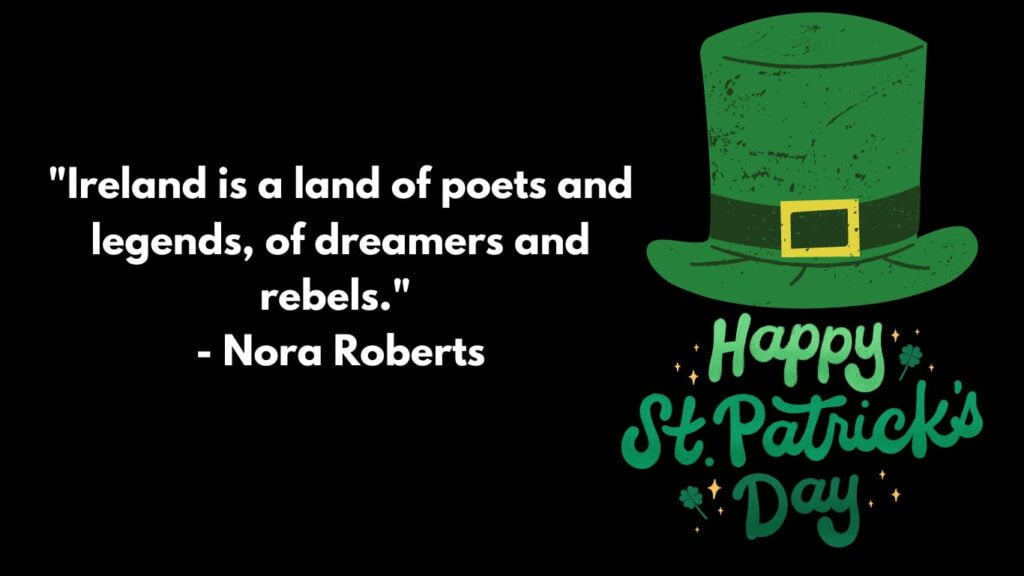
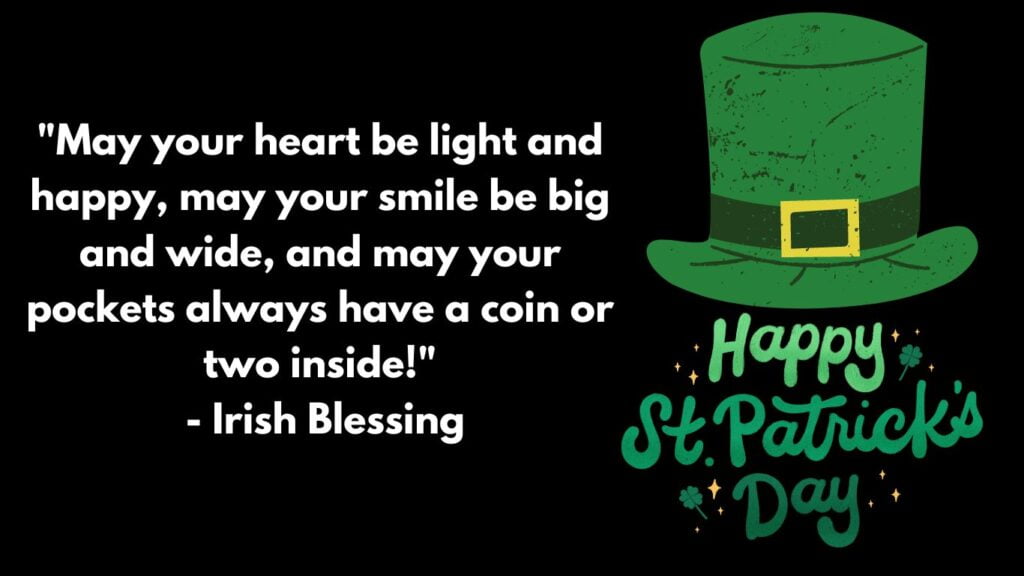
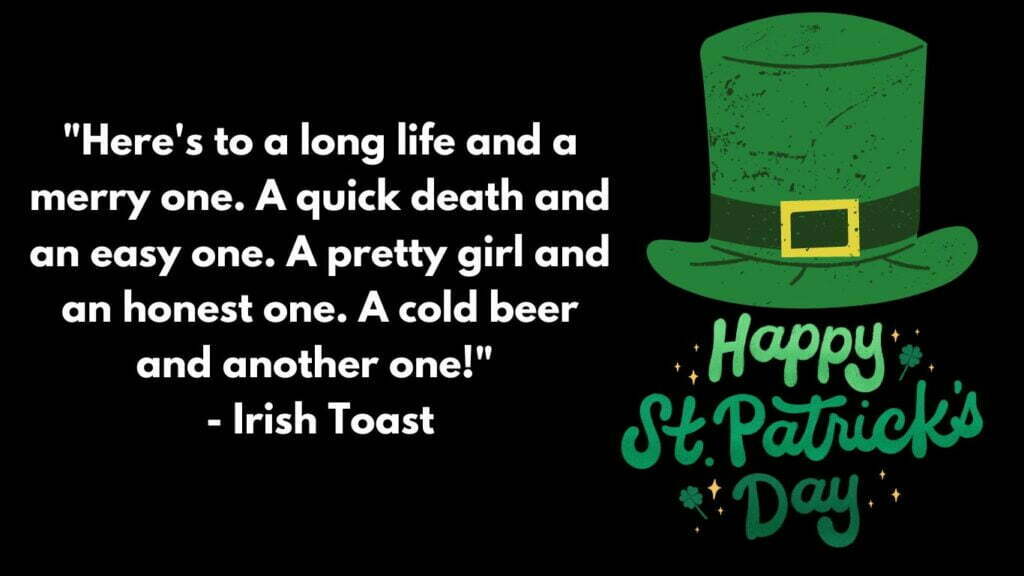
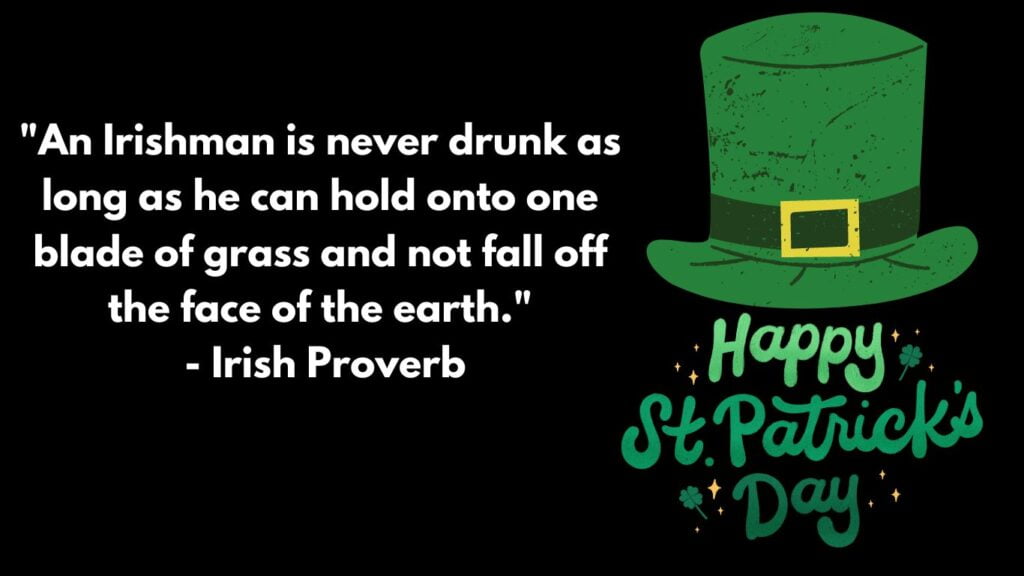
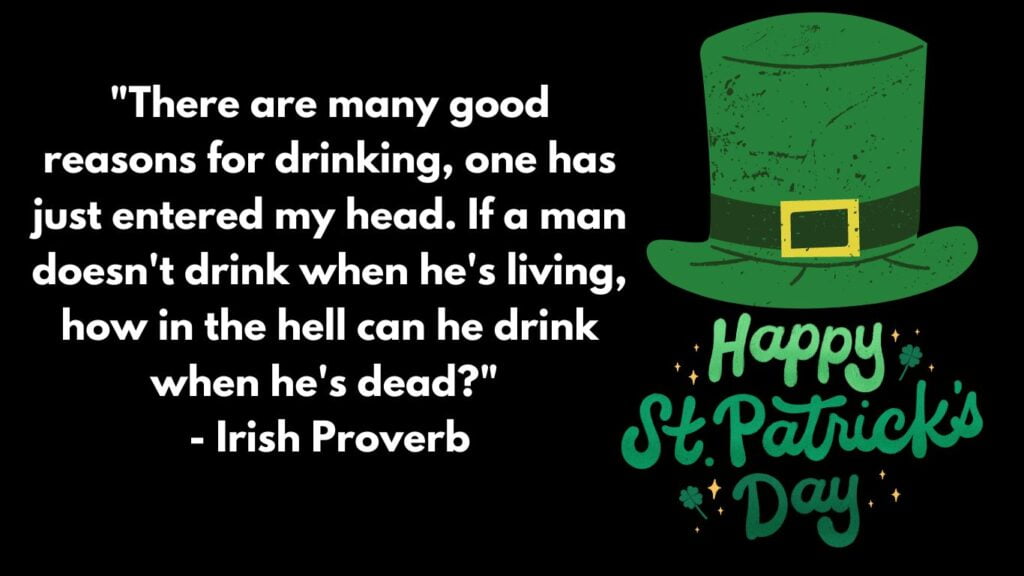

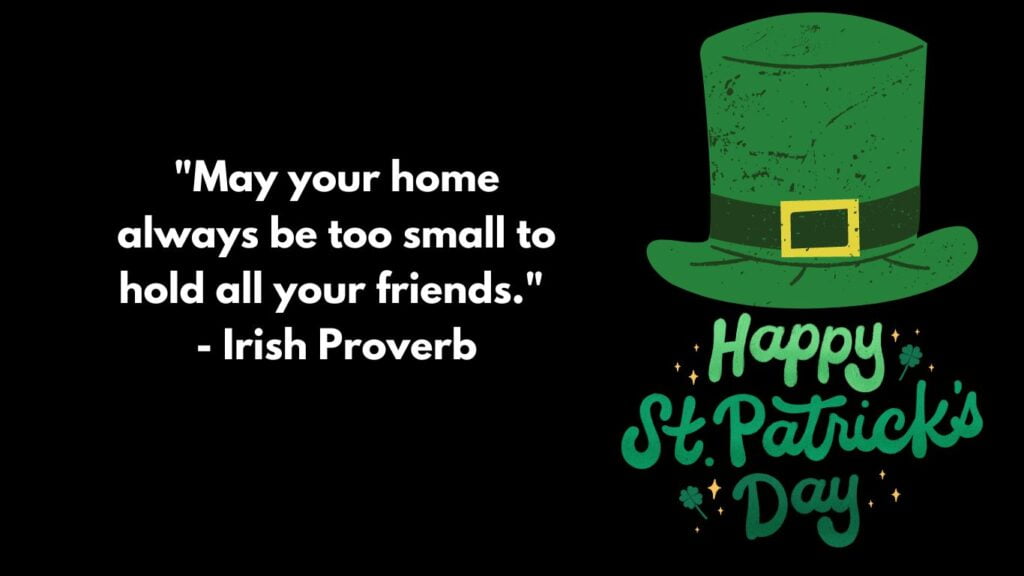
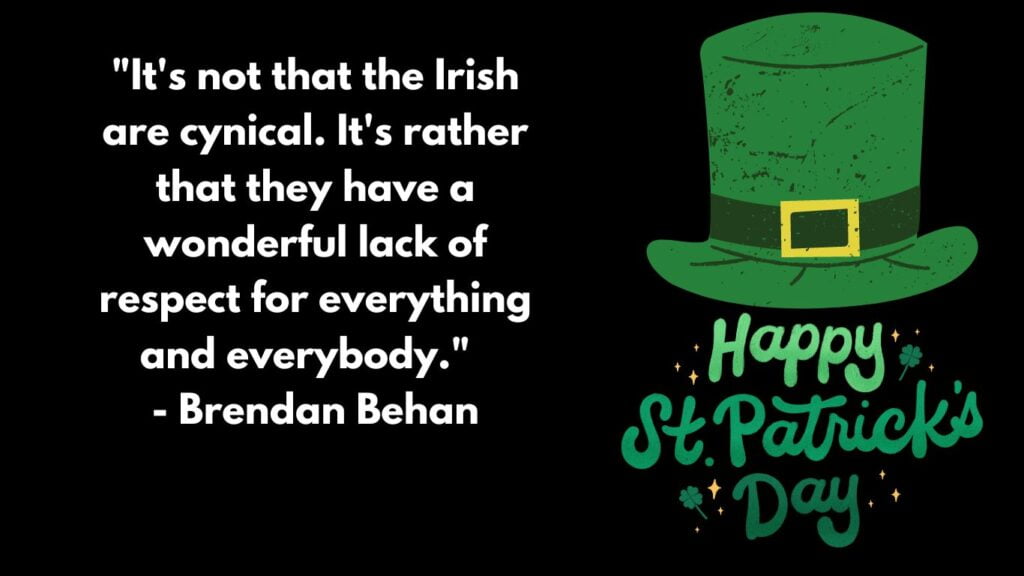
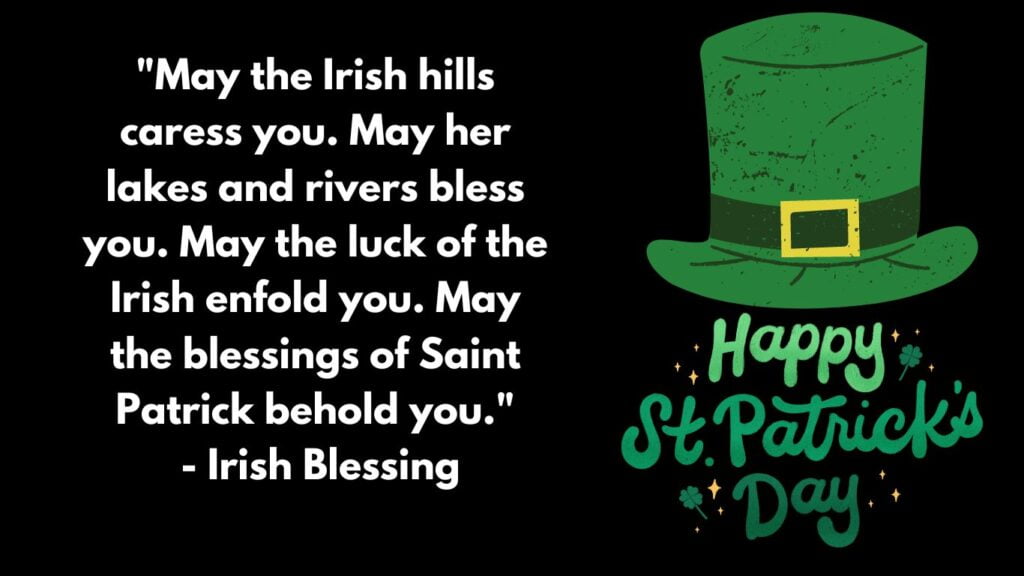
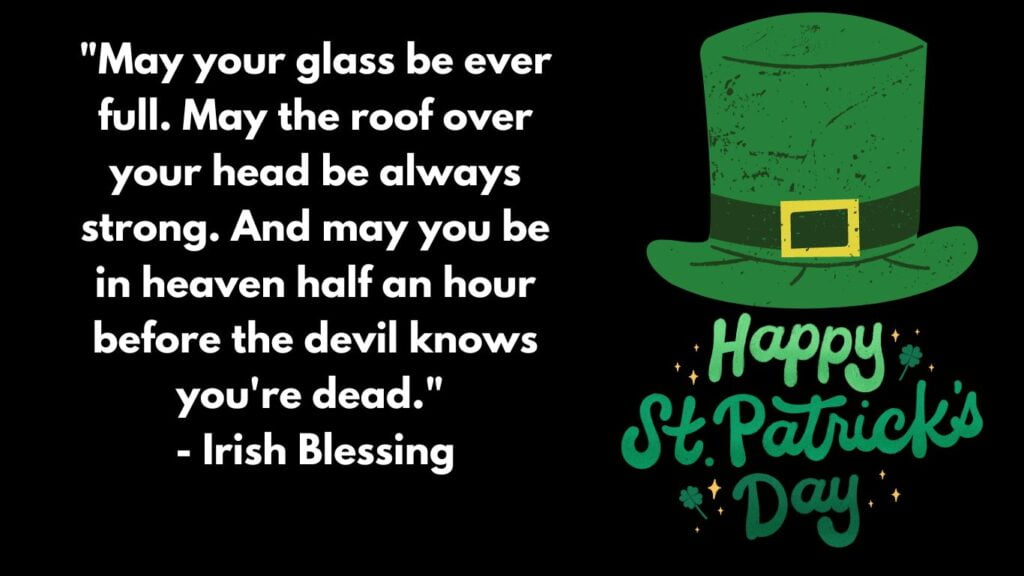
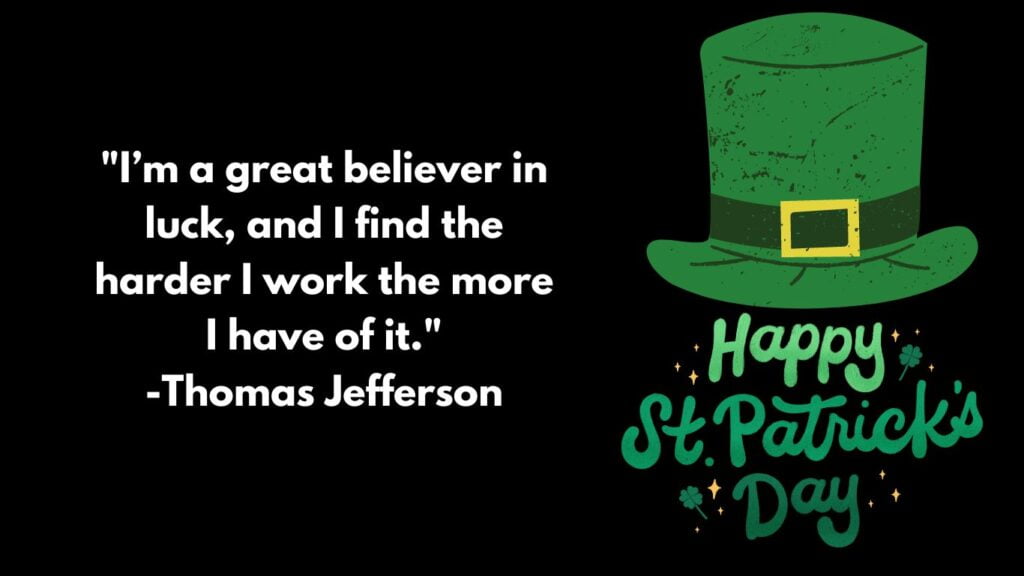
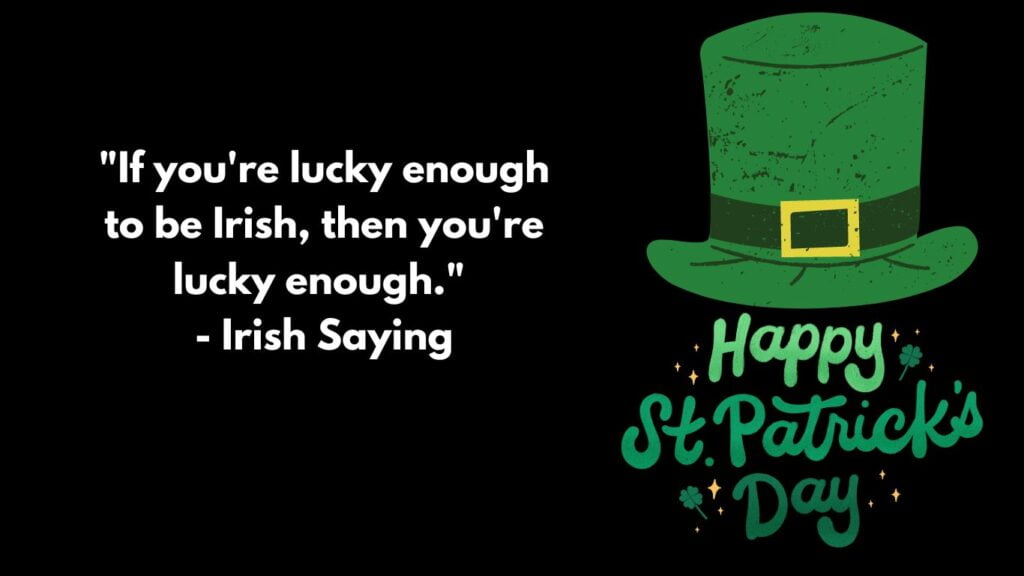
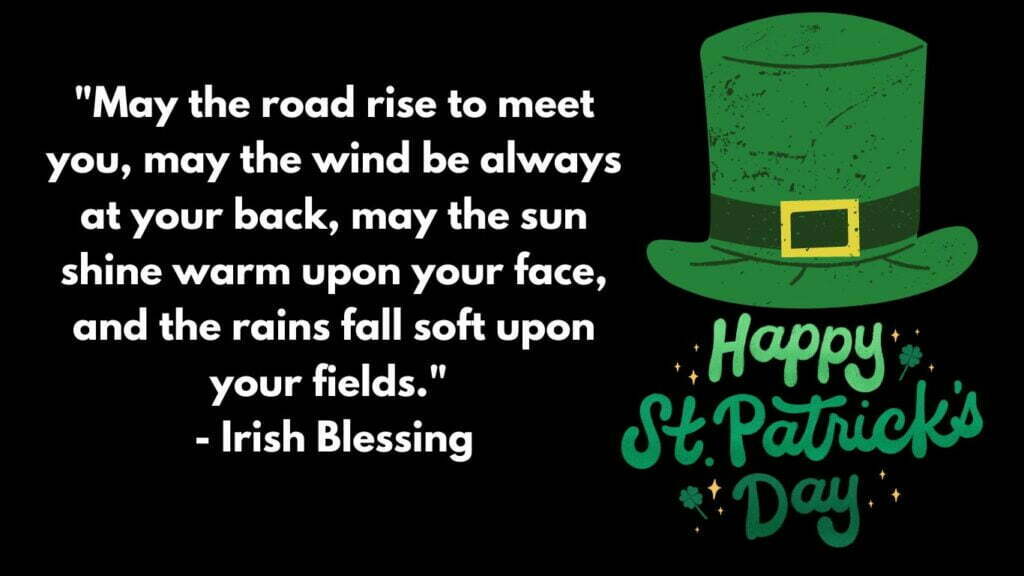
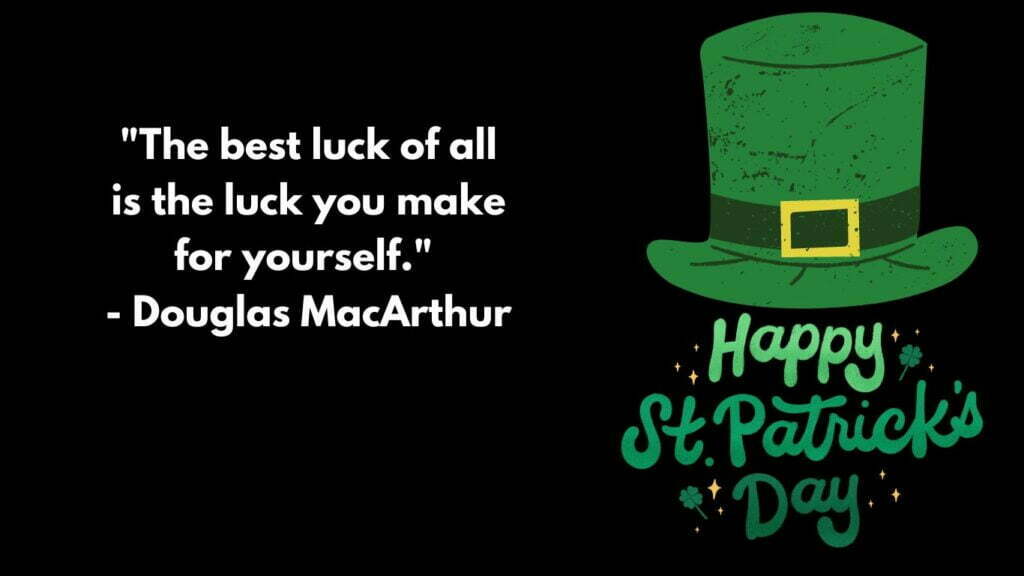

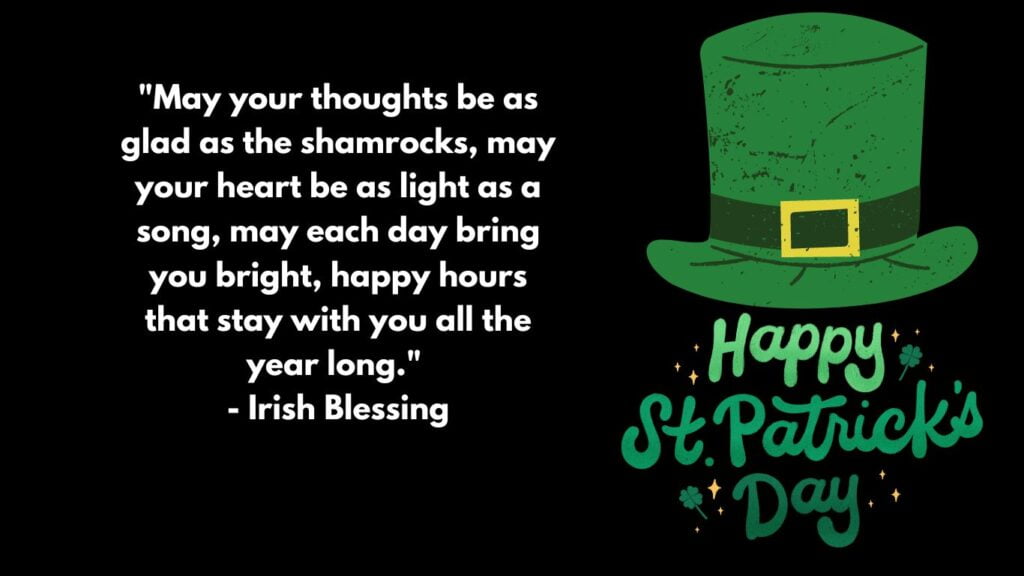
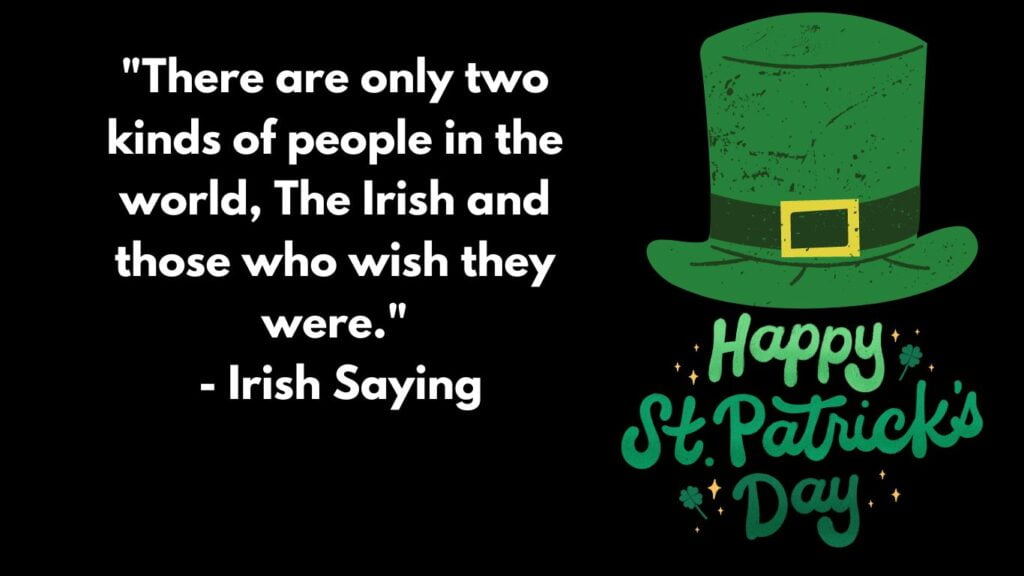
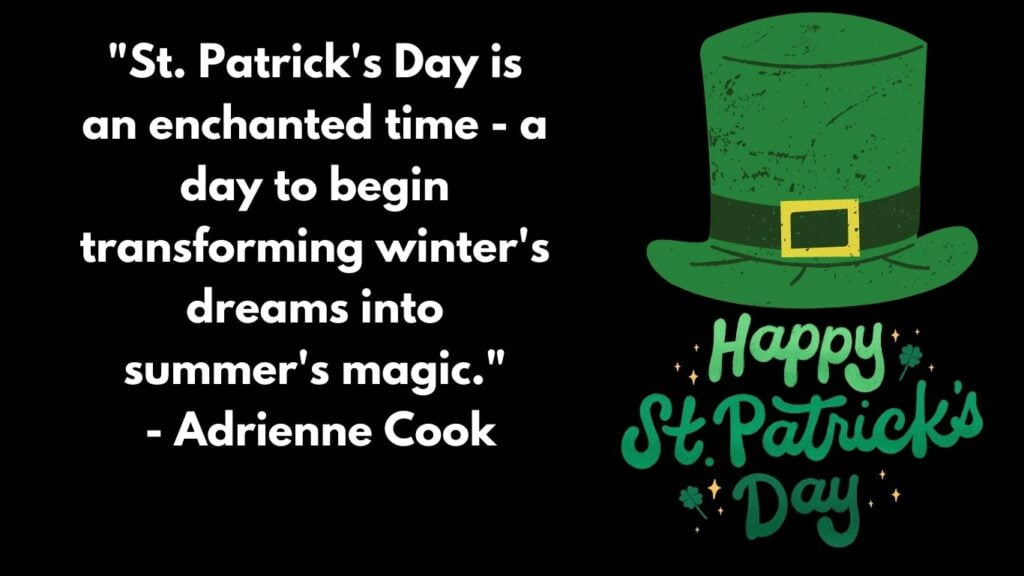
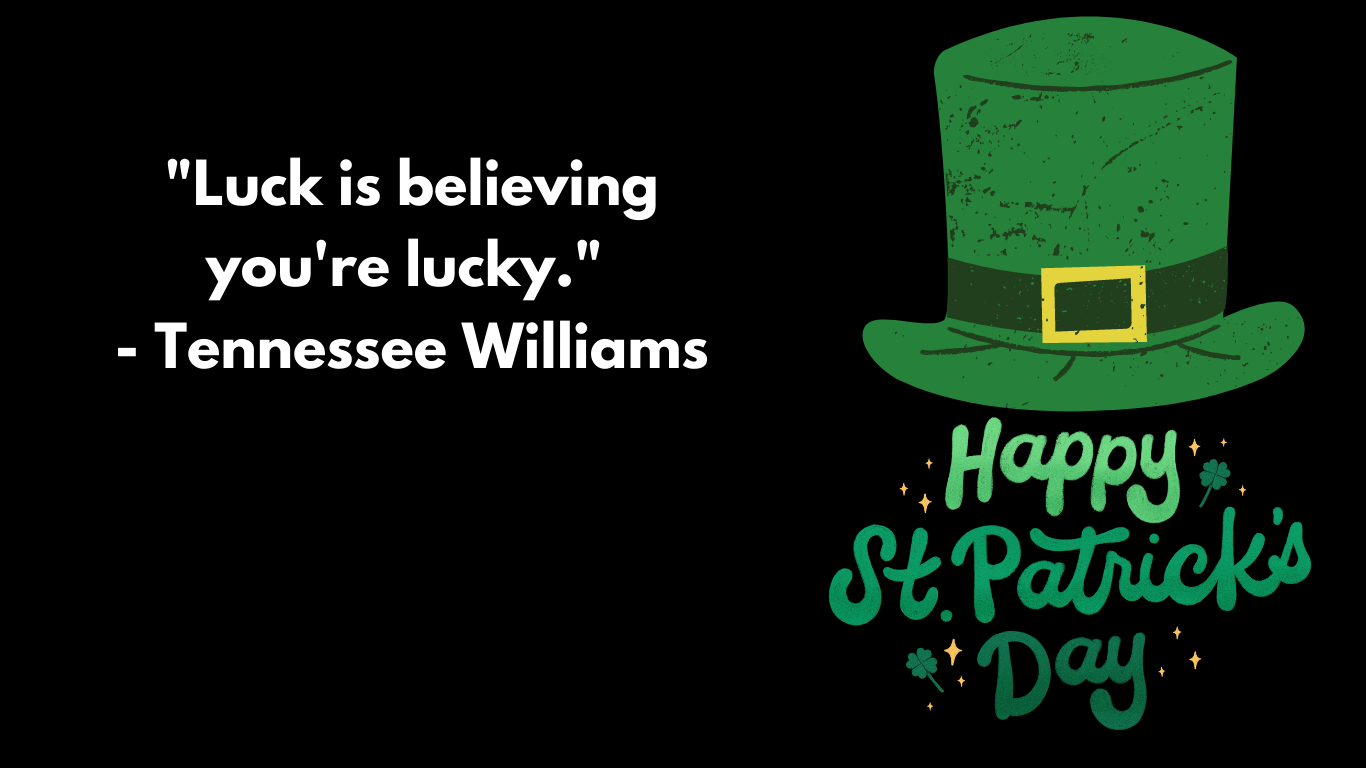
FAQ
What food is eaten on St Patrick’s Day?
Corned beef and cabbage,Irish soda bread,Shepherd’s pie,Colcannon,Irish stew,Guinness,Irish coffee
What are symbols of St Patrick’s Day?
The St. Patrick’s Day symbols are shamrocks, the color green, leprechauns, parades, corned beef and cabbage, and green beer and the harp.
What are 5 facts about Saint Patrick?
1.Saint Patrick was not originally from Ireland, but was born in Britain in the late 4th century. He was kidnapped and taken to Ireland as a slave when he was 16 years old, and spent six years in captivity before escaping and returning to Britain.
2.Saint Patrick is credited with bringing Christianity to Ireland, and he is said to have converted thousands of people to the Christian faith during his lifetime.
3.The shamrock, which is now widely associated with Saint Patrick’s Day, was reportedly used by Saint Patrick as a teaching tool to explain the concept of the Holy Trinity to the Irish people.
4.Saint Patrick is said to have performed many miracles during his lifetime, including driving snakes out of Ireland and raising people from the dead.
5.Saint Patrick’s Day is celebrated on March 17th, which is believed to be the day on which Saint Patrick died. It has been celebrated as a religious holiday in Ireland for over a thousand years, and is now celebrated all around the world as a celebration of Irish culture and heritage.
